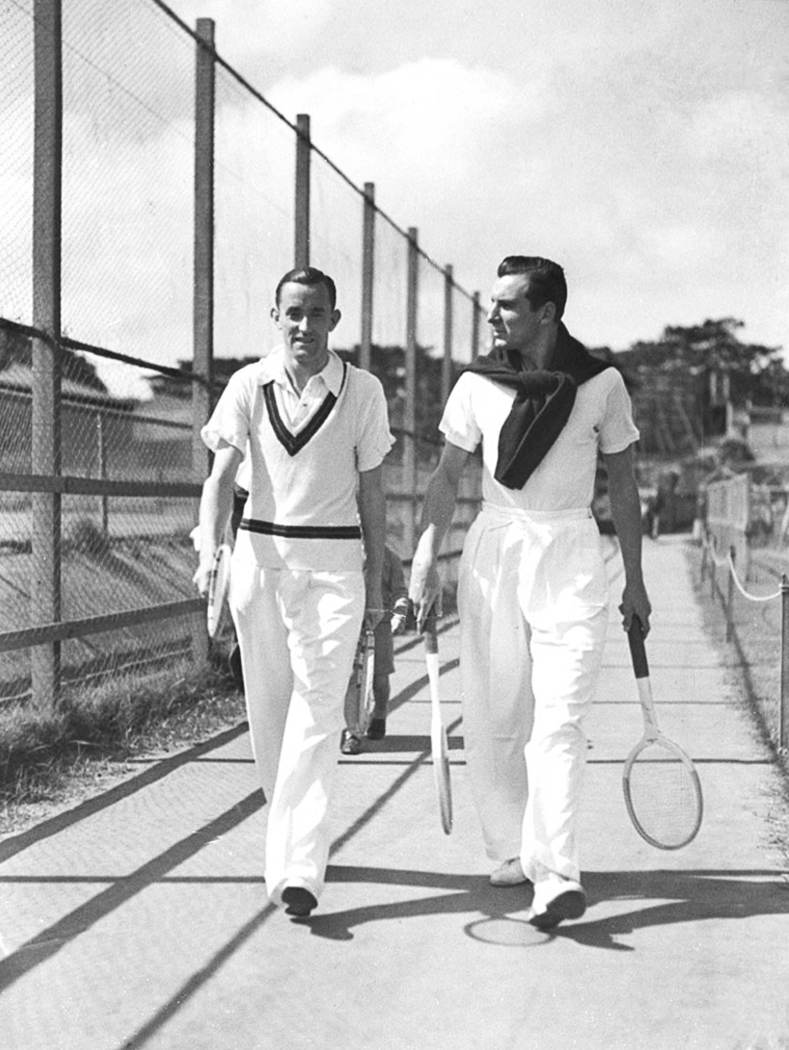Tennis is a sport that combines elegance, technique, and competition and has been played since the 19th century. Throughout its history, tennis has undergone numerous changes in rules, equipment, and fashion. Tennis fashion shows the evolution of the sport, society, and culture, and has given rise to iconic outfits that have created trends and style.
One of the names that have accompanied tennis fashion since its beginnings is Slazenger, an English brand founded in 1881 by brothers Ralph and Albert Slazenger. It was dedicated to the production of sports equipment, especially tennis and golf. Slazenger is the oldest sponsor in the tennis world, the official supplier of Wimbledon balls since 1902, and has also dressed some of the best players in history.
In this article, we show you some of the major changes in tennis fashion, the iconic outfits that illustrate them, and Slazenger’s role in this transformation.
Pure white
White dominated tennis fashion for much of the 20th century, especially in the most renowned tournaments, such as Wimbledon, which still retains this custom. White was associated with purity, elegance, and respect, and was also useful, as it repelled heat and hid sweat.
White attire tended to be discreet and formal, with long pants and shirts with long collars and sleeves for men, and long skirts and buttoned blouses for women. Some of the iconic outfits of this era were those of Fred Perry, who took Wimbledon three times with his white polo shirt with a laurel wreath sewn on, or those of Suzanne Lenglen, who innovated women’s fashion with her pleated skirt and headband.
Slazenger was one of the brands that opted for white in its creations and dressed some of the Wimbledon champions, such as Billie Jean King, who won the tournament six times with her white round-necked, short-sleeved dresses, or Björn Borg, who won the trophy five times with his white open-necked, short-sleeved polo shirts.
Color and variety
Tennis fashion has been full of color and variety since the 1960s and 1970s, in tune with the social, cultural, and artistic movements that demanded freedom, creativity, and diversity. Color served to manifest the personality, mood, and style of each player, and also to attract the eye and distinguish themselves from others.
Colored outfits tended to be more daring and novel, with shorts and short-sleeved or sleeveless T-shirts for men, and short skirts and tight-fitting tops for women. Some of the iconic outfits of this era were those of John McEnroe, who mixed his horizontally striped polo shirts with his headbands, or Chris Evert, who wore his brightly colored dresses with matching headbands.
Slazenger also renewed itself and added color and variety to its creations, and continued to dress some of the Wimbledon winners, such as Martina Navratilova, who was crowned nine times with her blue, green, or red outfits, or Pete Sampras, who won seven titles with his black, gray or blue polo shirts.
 Technology and functionality
Technology and functionality
Advances in science, computing, and communication ushered in a new era in tennis fashion from the 1990s and 2000s, which focused on technology and functionality. Technology was employed in the materials, patterns, and embellishments of garments to optimize performance, comfort, and safety for male and female players. Functionality was based on the fit, elasticity, and permeability of the garments, to allow movement, ventilation, and thermal control of the players.
The technological and functional outfits tended to be more fashionable and elegant, with shorts and short-sleeved or sleeveless polo shirts for men, and skirts or shorts and tops or polo shirts for women. Some of the iconic outfits of this era were those of Roger Federer, who showed off his turtleneck polo shirts with his zippered jackets, or Serena Williams, who impressed with her irregularly cut dresses or one-pieces.
Slazenger also added technology and functionality to its creations and continued to dress some of the Wimbledon winners, such as Andy Murray, who won two titles with his crewneck polo shirts and shorts with pockets, or Angelique Kerber, who took the trophy with her halter-neck dress and ruffled skirt.
These are some of the major changes in tennis fashion, the iconic outfits that illustrate them, and Slazenger’s role in this transformation. Tennis fashion is a reflection of the history, culture, and personality of each player, as well as a form of expression, communication, and fun. Tennis fashion is, in short, a fundamental part of the sport and lifestyle.
If you want high-quality European-made garments that have a history, you can’t miss the Slazenger Heritage collection, where you will find polo shirts, sweaters, jackets, and more, based on the iconic outfits that have created trends and style in the tennis world. Take advantage of this opportunity to wear a legend!


